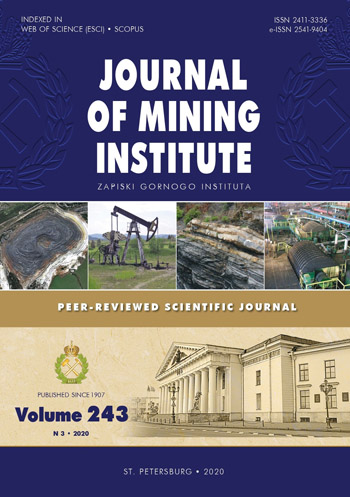Management of hardening mixtures properties when stowing mining sites of ore deposits
- 1 — Ph.D. Professor Geophysical Institute of the Vladikavkaz Scientific Center of the Russian Academy of Sciences
- 2 — Ph.D., Dr.Sci. Rector North Caucasian State Technological University
- 3 — Ph.D., Dr.Sci. Professor Belgorod State National Research University
- 4 — Ph.D., Dr.Sci. Professor Tula State University
Abstract
Underground mining is characterized by the weakening of the bearing rock mass strata competence and the accumulation of mineral waste. The full use of subsurface resources is ensured by the use of technologies with filling voids by hardening mixtures, which requires high-quality raw materials to obtain the required strength. The deficit of the binding component can be filled with the use of granulated slags of blast-furnace process, mill tailings, ash-slags and other wastes. Most often, voids are laid by mixtures with a combination of cement and a binding component. Mixtures with ash-slag additives to cement in an equivalent amount are not inferior to the strength of the mixture only with cement, especially when grinding ash-slag. The properties of stowing rock masses when using composite binding components and inert fillers are controlled by mechanical, chemical, physical and energy effects at the stages of preparation and transportation of hardening mixtures. To obtain the active fraction of cement substitutes, disintegrators are used that apply the inertia forces of materials at a high speed of rotation with an increase in high activity indicators and lower energy costs. The components of hardening mixtures can be the majority of waste from mining and related industries, which is determined experimentally in specific conditions.
